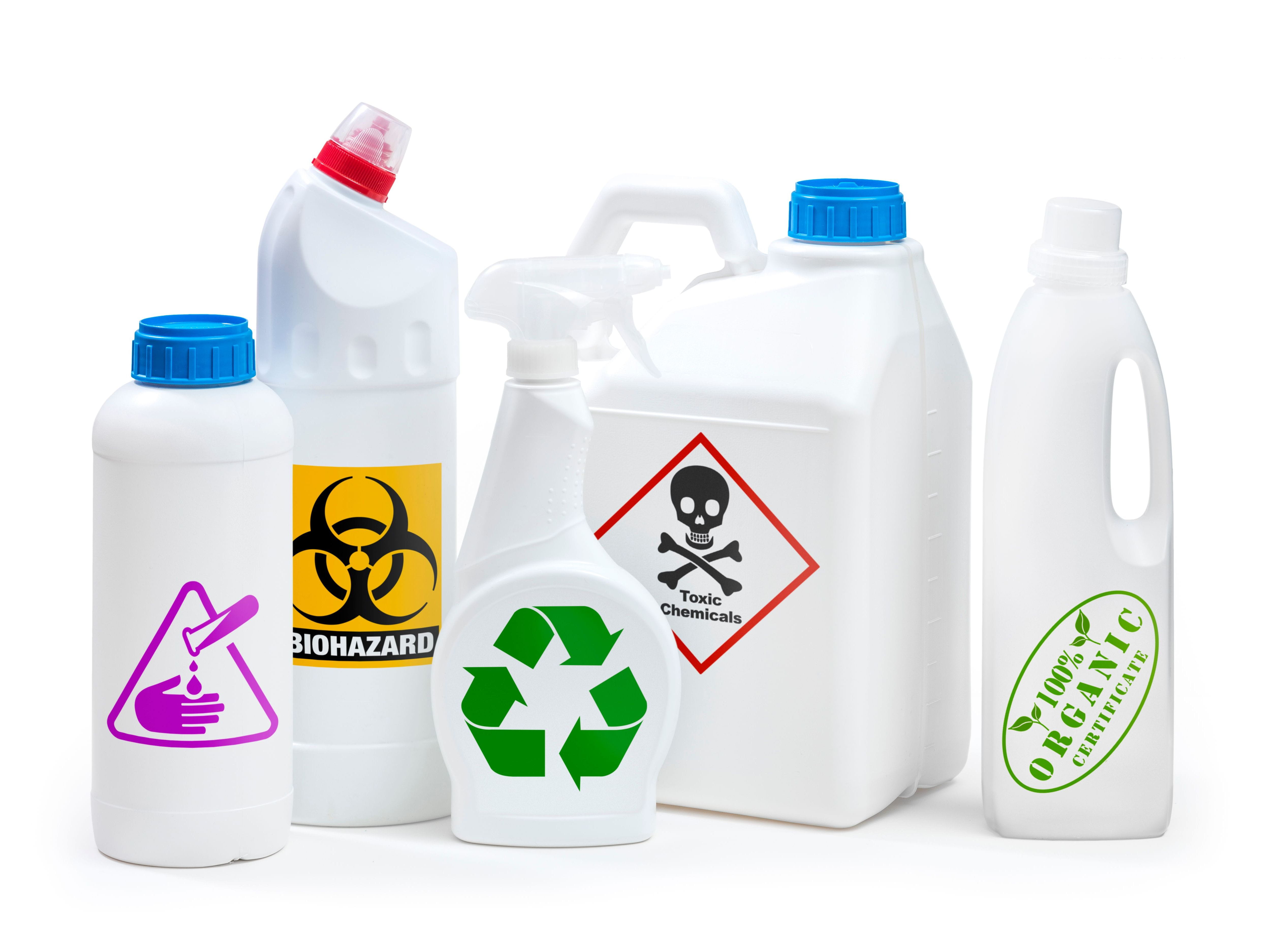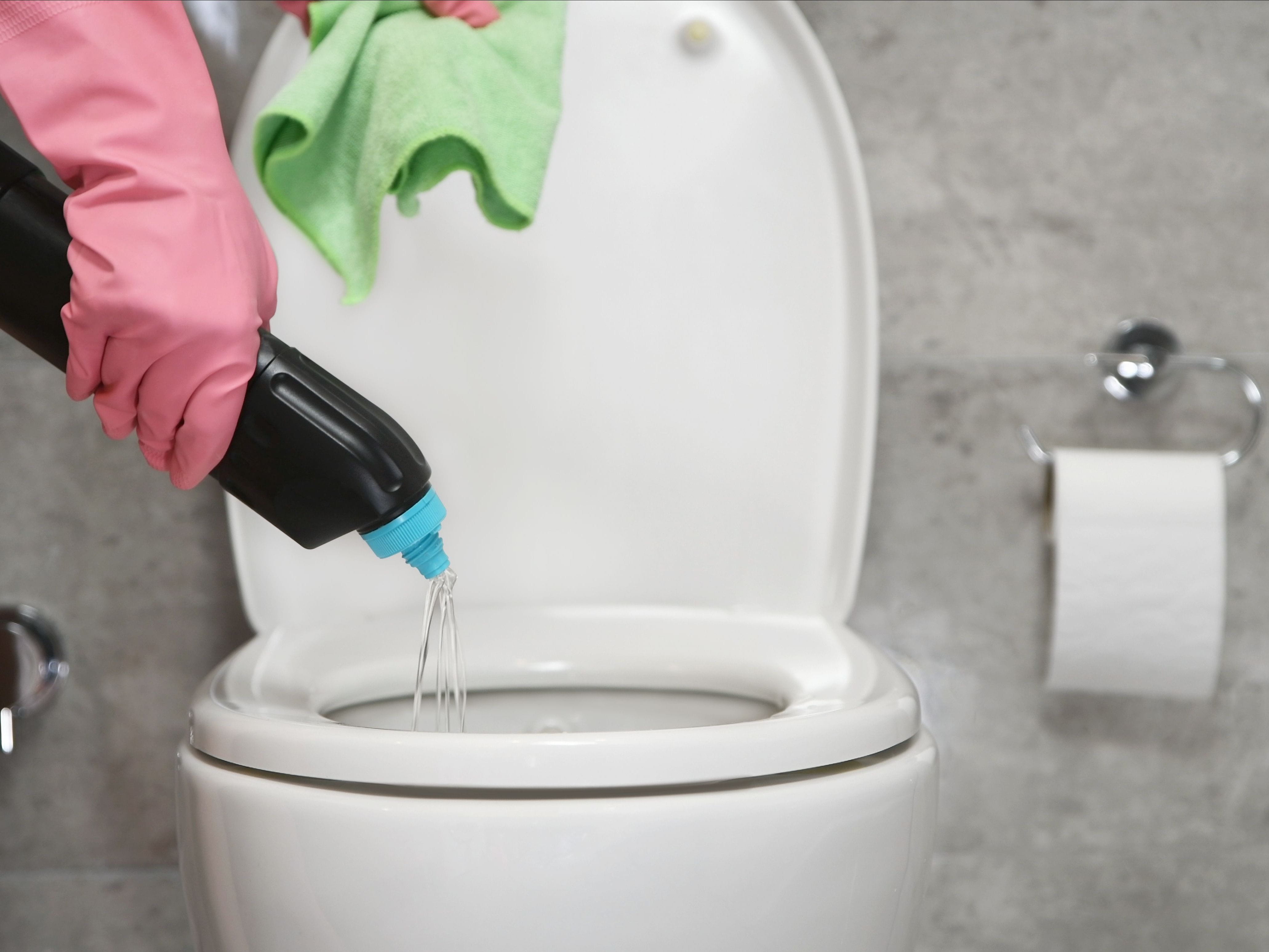Chlorine Gas: Get the Facts

The Bottom Line
Chlorine is a chemical element that takes the form of a gas at room temperature. It can cause burning and irritation of the eyes, nose, and throat, and can lead to coughing or lung injury. Chlorine gas mixed with water forms hypochlorite, which is found in bleach. Mixing bleach with an acid forms chlorine gas. If you inhale chlorine gas, leave the area immediately and breathe fresh air.

What is chlorine? Is chlorine a gas?
Chlorine is a chemical element that is part of a group of 6 halogen chemicals on the periodic table. It is a gas at room temperature. Chlorine is very water soluble. When chlorine gas reacts with water it produces hypochlorite, which is found in bleach (typically 3-6% hypochlorite) and industrial strength cleaners (around 20%). Chlorine and chloramine are used in swimming pools to keep them clean.How to make chlorine gas: mixing bleach and ammonia.
When an acid is mixed with a hypochlorite solution (such as bleach), chlorine gas is formed. Many household cleaners can contain acids. Similarly, ammonia is a common ingredient in glass cleaners. Mixing it with a hypochlorite can make chloramine gas. Chloramine gas is less volatile than chlorine gas, so that exposure to chloramine gas is less likely to produce serious toxicity than exposure to chlorine gas.
Chlorine gas can also be made when chlorine pool tablets spoil. This is can happen over time if water gets into the packaging or if the package is stored in a humid environment.
How to identify chlorine gas: What color is chlorine gas? What does it smell like?
At room temperature, chlorine gas is a yellowish-green color. It has a noxious, intense odor which smells like bleach. The smell may not be noticeable in those who have been exposed to chlorine gas many times. Chlorine gas is heavier than air so it may linger near the ground.
What are the effects of chlorine gas exposure? Is chlorine gas toxic?
Chlorine gas causes burning of the eyes, nose, and throat, as well as a cough. More serious exposure can cause damage to the lungs and lead to shortness of breath, wheezing, hoarseness, chest pain, upper airway swelling and obstruction, and pneumonia. Burns to the skin and eyes can occur from exposure to the gas or higher concentration hypochlorite solutions.
Swallowing household bleach can cause mouth and throat irritation, but does not usually cause serious toxicity. However, swallowing higher concentration hypochlorite solutions can cause burns in the esophagus and stomach. If this occurs, toxic effects may include trouble swallowing, pain in the throat, chest and abdomen as well as vomiting blood.
What is the treatment for chlorine gas inhalation?
The first treatment for chlorine gas inhalation is to stop the exposure by leaving the affected area and seeking out fresh air to inhale. Taking a shower, inhaling humidified or steamy air, and changing your clothes is also recommended. For people with severe symptoms, medical care will be required and may include the administration of humidified oxygen, drugs to treat wheezing, intubation to help breathing, and (rarely) inhaled sodium bicarbonate for severe lung injury.
How long does chlorine gas stay in the air? How can you neutralize chlorine gas?
Chlorine gas can stay in the air for just a few minutes to several hours. It depends on the size and ventilation of the area as well as the amount of gas present. Open windows and doors to let in fresh air. In an industrial setting, leaking chlorine gas can be neutralized with sodium bicarbonate but this is not possible in the home setting.
What to do if you inhale chlorine gas.
Leave the area immediately and breathe fresh air. If possible, shower for 20 minutes and breathe in the steamy air from the shower to help soothe your airway. Change your clothes. If you have trouble breathing or have other serious symptoms, you should seek medical attention. If someone swallows bleach or another hypochlorite product, inhales chlorine gas or is exposed to chlorine gas in the eyes or on the skin, or if you have a question about using bleach or other hypochlorite products safely, help from experts is available through the webPOISONCONTROL online tool and by phone at 1-800-222-1222. Poison Control’s expert guidance is always free, confidential, and available 24 hours a day.
Wendy Klein-Schwartz, Pharm.D., MPH
Clinical Toxicologist
Arika Williams, PharmD, CSPI
Pharmacist and Certified Specialist in Poison Information
Poison Control Media Information
Did you find this page helpful? If so, we need your support. Poison Control is in constant competition with misinformation online. Links to www.poison.org or our webPOISONCONTROL triage tool from other websites and blogs help internet searchers quickly find accurate information and Poison Control’s contact information in an emergency. If you use the content from this page, please provide attribution via a link back to this page, www.poison.org, or https://triage.webpoisoncontrol.org/#!/exclusions. By doing so, you could save a life. Thank you!
Poisoned?
Call 1-800-222-1222 or
Prevention Tips
- Store bleach and other hypochlorite containing products up, away, and out of sight of children.
- Read labels and follow instructions before using products containing hypochlorite.
- Do not mix household chemicals such as bleach and ammonia or bleach and acid.
- Wear gloves to protect skin when using products containing hypochlorite.
- Be sure you are working in a well-ventilated area.
This Really Happened
A 43-year-old woman was cleaning the bathroom. She used a hydrochloric acid-containing toilet bowl cleaner because it was advertised to get stubborn stains out. She forgot to flush the toilet before using a toilet cleaner containing bleach to clean and kill germs. Immediately, her eyes started tearing, her nose and throat felt irritated, and she started coughing. She opened the bathroom windows and left the room. She was still coughing so called Poison Control. The poison specialist informed her that mixing an acid with bleach forms chlorine gas. The poison specialist asked her about her symptoms and determined that eye and throat irritation had resolved after leaving the bathroom. Although she still had a cough, it had improved. The poison specialist confirmed that opening the windows to air out the bathroom and leaving the room had been the appropriate course of action. Since the symptoms were improving, she could stay at home. When the poison specialist followed up an hour later, all symptoms had resolved.For More Information
Chlorine: Exposure, Decontamination, Treatment | CDC
References
Poisoned?
Call 1-800-222-1222 or
Prevention Tips
- Store bleach and other hypochlorite containing products up, away, and out of sight of children.
- Read labels and follow instructions before using products containing hypochlorite.
- Do not mix household chemicals such as bleach and ammonia or bleach and acid.
- Wear gloves to protect skin when using products containing hypochlorite.
- Be sure you are working in a well-ventilated area.
